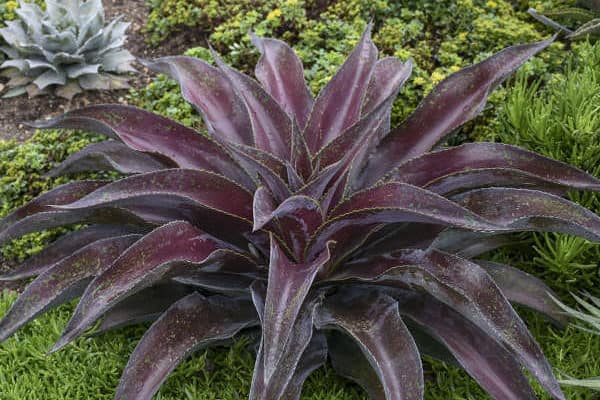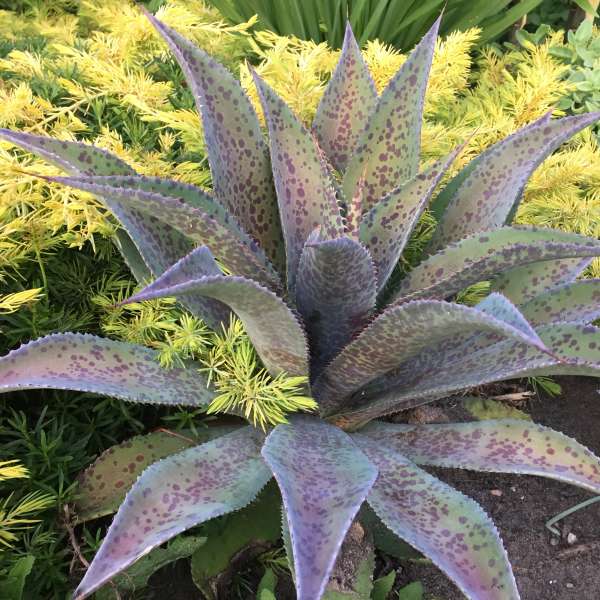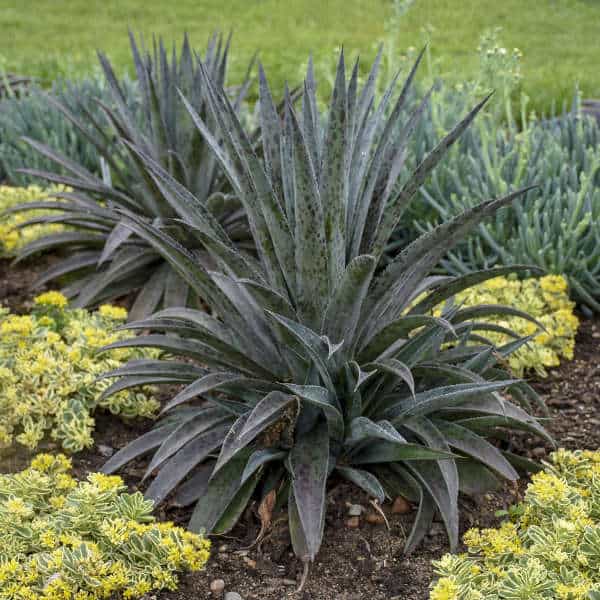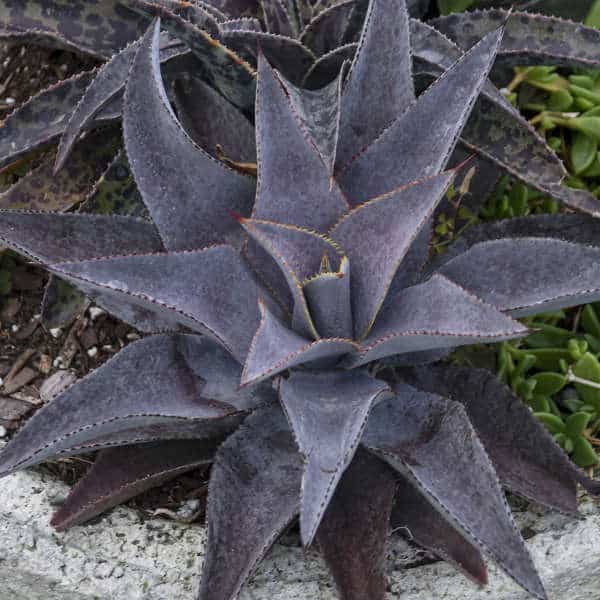Mangaves (pronounced man-GAH-vay) are a new, tropical succulent cross between Agaves and Manfredas. These stunning hybrids combine the shape and habit of Agaves with the faster growth rate and leaf patterning of the Manfreda (closely related to Agaves). They form stiff rosettes of leaves but do not have the sharp spines common with most agaves. They will flower once in their lifetime and then produce new offsets or “pups”. These blooms are highly attractive to hummingbirds.
Growing Mangaves
- TEMPERATURE – Mangaves are hardy to zones 8 through 10. While they can tolerate a short, light frost, the minimum temperature they should be grown at is around 60 degrees. Extended cool temperatures can cause the plants to decline.
- SUNLIGHT– Mangaves require a sunny spot, or at least 6 hours of sunlight, for their best color. When indoors, place your plant in the sunniest position available. Shady conditions can cause the leaf colors to fade and the plants to stretch. Placing the plants in full sun again will cause them to regain their color
- WATER– Mangaves can handle a bit more water than other succulents. Regular watering keeps the plants actively growing. Avoid soggy conditions, as this will lead to rotting, while dry conditions can cause the plants growth rate to slow down. Knowing this can help you regulate the size of your plant and keep it well proportioned to its container. Some specimens can grow to 2-4ft wide!
- SOIL– Provide your Mangaves with a well drained, average to gritty potting mix. Make sure your containers can drain away excess water.
- FERTILIZING– Mangaves are not heavy feeders. They appreciate a small dose of diluted fertilizer when growth begins in the spring.
Mangaves can be used alone as a specimen or combined with other fun succulents and annuals in containers. They can be planted in the ground for an interesting landscape specimen, remembering that they are not cold hardy and will have to be brought in if you wish to save them for next year. Their thick leaves are deer and rabbit proof.
There are many color variations and leaf styles of Mangaves available. They can easily become habit forming. This year we have the following varieties for sale:







